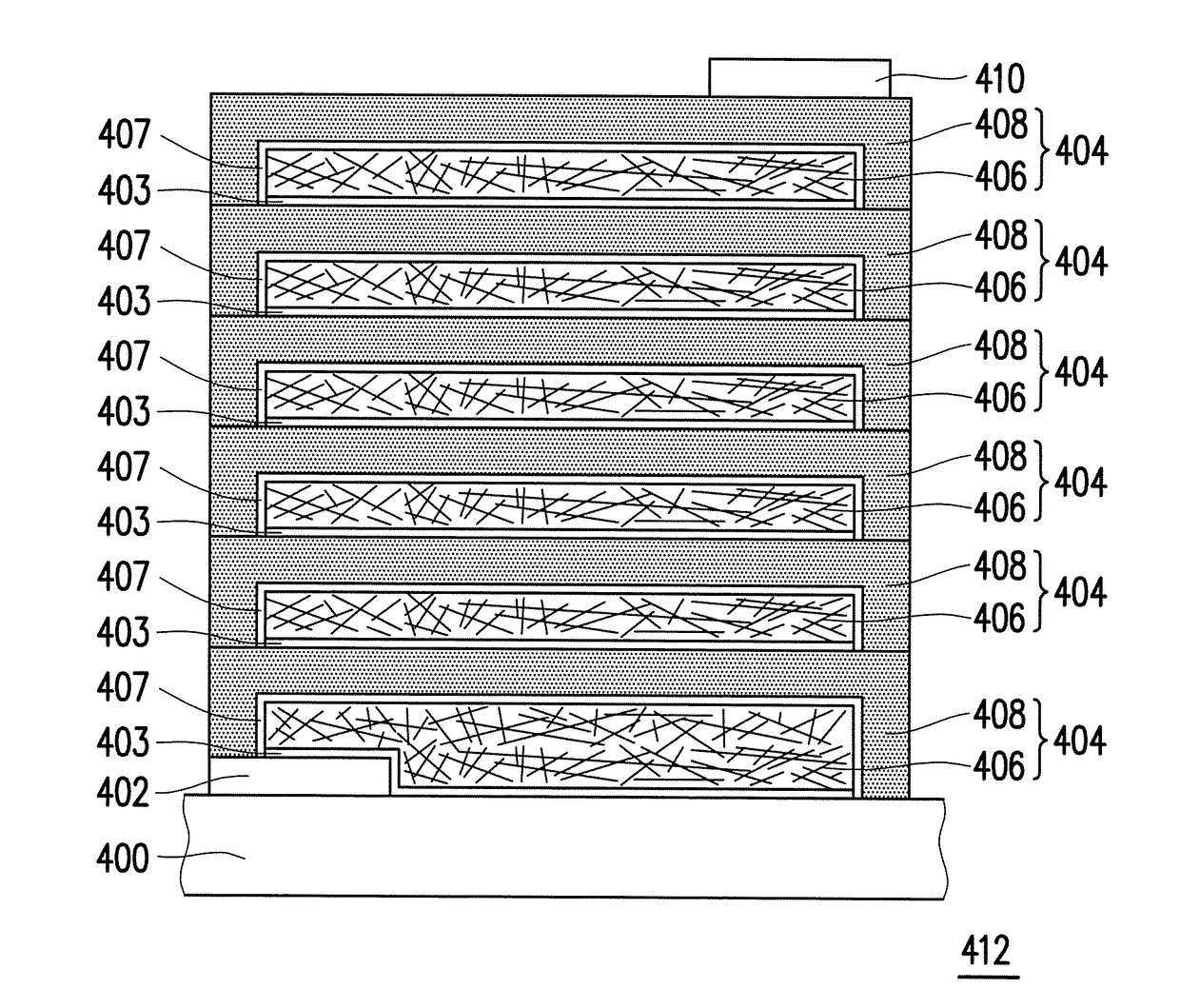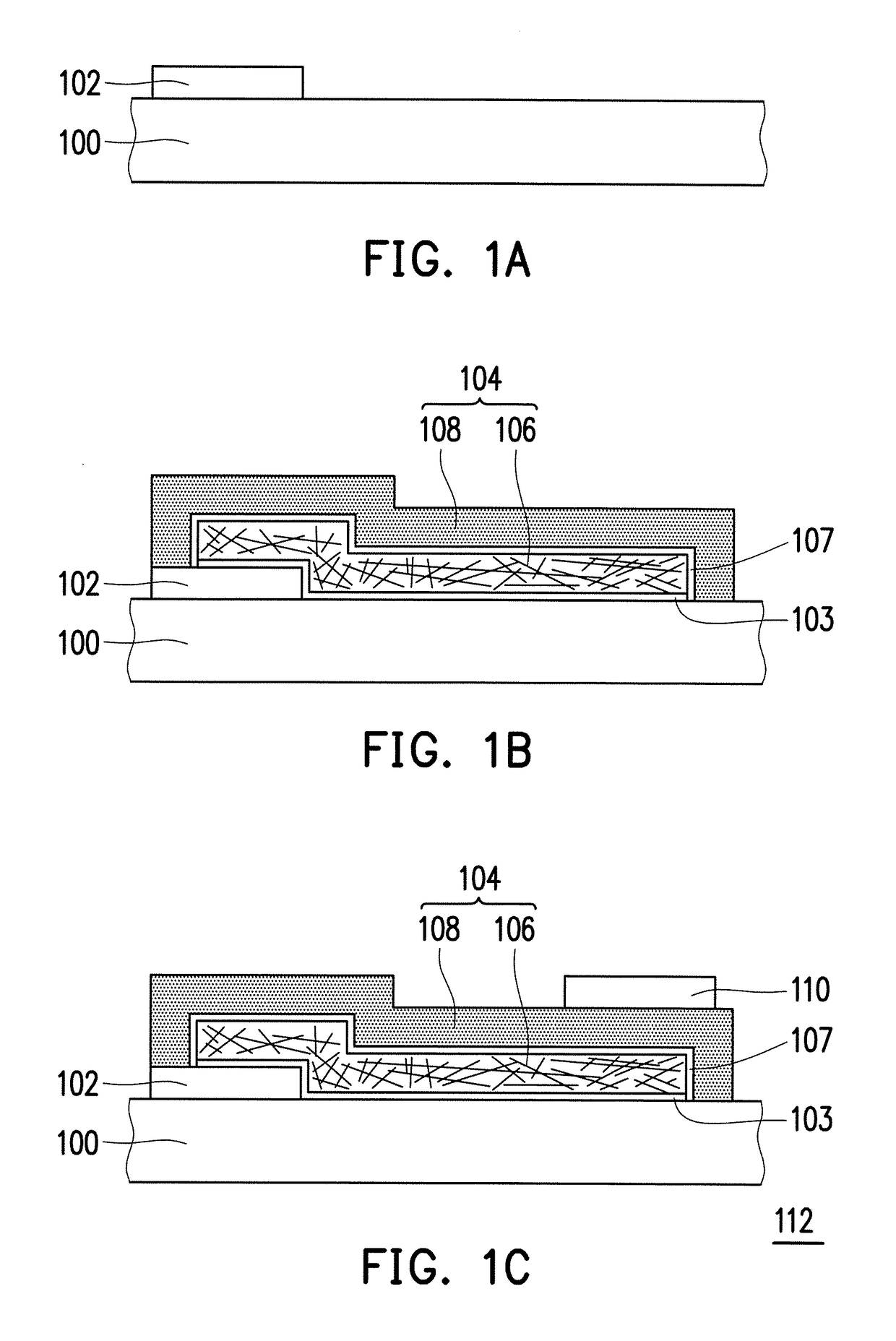Reduction-oxidation sensor device and manufacturing method thereof
a sensor device and reduction-oxidation technology, applied in the field of sensor devices, can solve the problems of low sensitivity and relatively narrow sensing range, and achieve the effects of wide sensing range, large variation of conductivity, and great sensitivity of reduction-oxidation reactions
- Summary
- Abstract
- Description
- Claims
- Application Information
AI Technical Summary
Benefits of technology
Problems solved by technology
Method used
Image
Examples
experimental example
[0036]Referring to FIG. 3 and FIG. 4 together, as similar to the reduction-oxidation sensor device 312, a reduction-oxidation sensor device 412 of the present experimental example has 6 sensing structures 412 between a first electrode 402 and a second electrode 410. Each of the sensing structures 412 includes a metal nanowire layer 406 and a meal oxide layer 408. The metal oxide layer 408 wraps the metal nanowire layer 406. In addition, the first electrode 402 and the 6 sensing structures 404 are located on a substrate 400. In the present experimental example, the reduction-oxidation sensor device 412 further includes 6 first polymer material layers 403 and 6 second polymer material layers 407. Each first polymer material layer 403 may be located between each corresponding metal nanowire layer 406 and a layer therebelow. Each second polymer material layer 407 may be located between each corresponding metal nanowire layer 406 and each corresponding metal oxide layer 408. Additionally...
PUM
| Property | Measurement | Unit |
|---|---|---|
| diameter | aaaaa | aaaaa |
| diameter | aaaaa | aaaaa |
| length | aaaaa | aaaaa |
Abstract
Description
Claims
Application Information
 Login to View More
Login to View More - R&D
- Intellectual Property
- Life Sciences
- Materials
- Tech Scout
- Unparalleled Data Quality
- Higher Quality Content
- 60% Fewer Hallucinations
Browse by: Latest US Patents, China's latest patents, Technical Efficacy Thesaurus, Application Domain, Technology Topic, Popular Technical Reports.
© 2025 PatSnap. All rights reserved.Legal|Privacy policy|Modern Slavery Act Transparency Statement|Sitemap|About US| Contact US: help@patsnap.com



